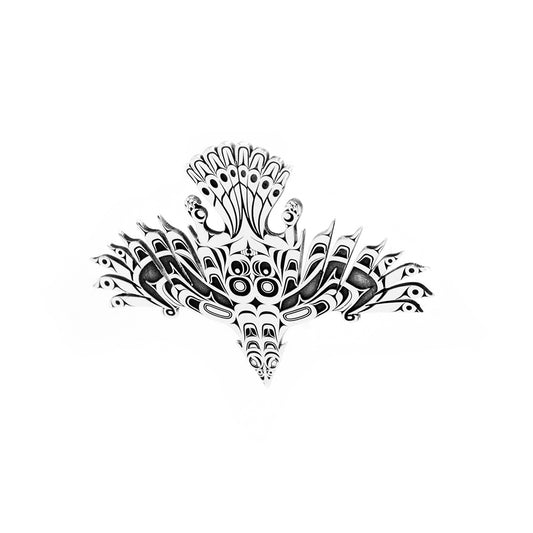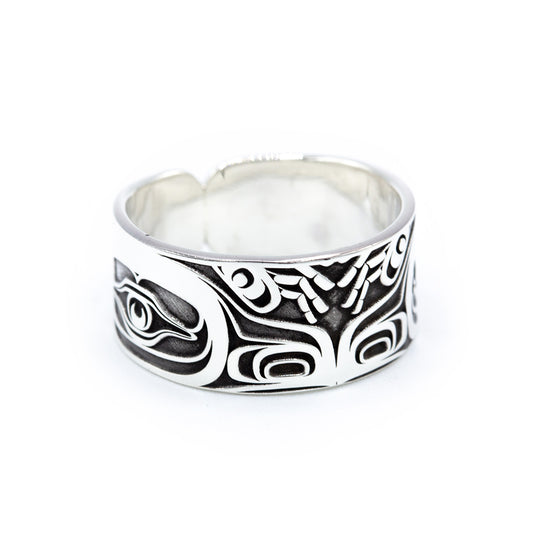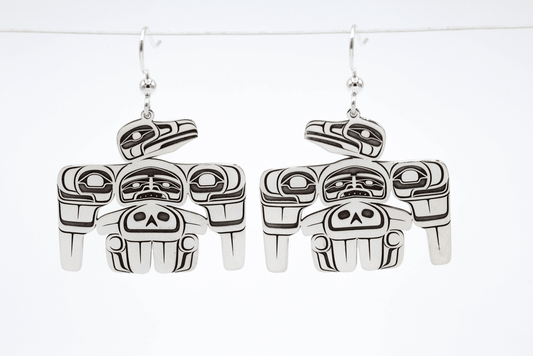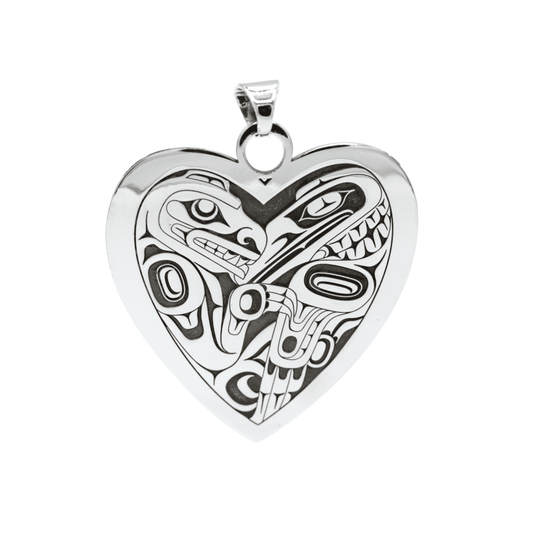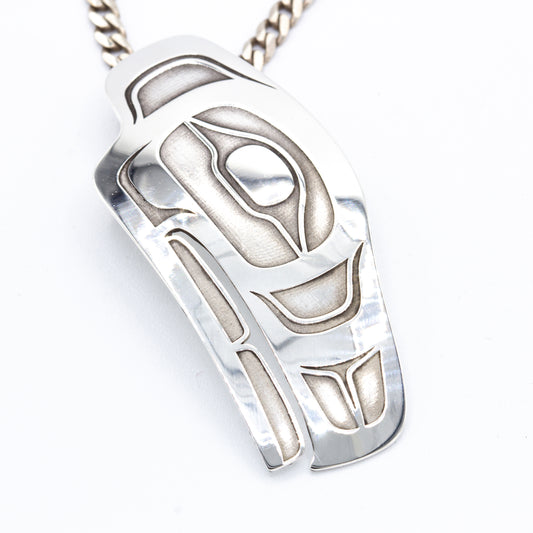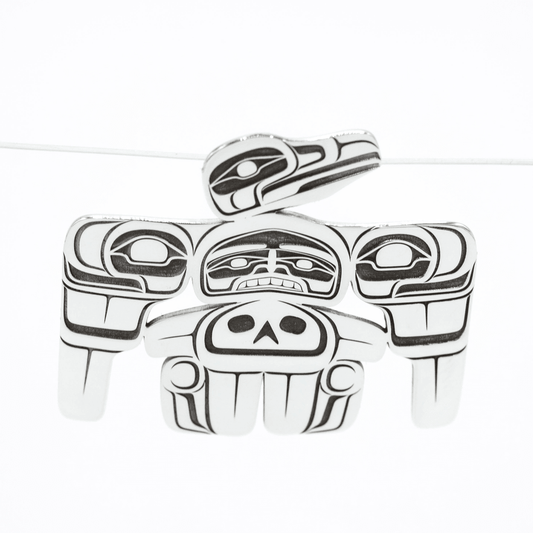Collection: The Raven Symbol
Known as the Trickster, the Raven is one of the most familiar characters in Indigenous stories and culture. Although his role varies from one culture to the next, the Raven is a primary crest and among the most common of all Northwest Coast jewelry designs. As the Raven has the power to transform itself or other beings, he is kindred with transformation and transition (Dawkins).
Indigenous Significance
To the Haida, Tlingit and Tsimshian, the Raven is the original Trickster, known for its relentless schemes, practical jokes and impulsive behaviour. Raven has the power of prophecy and is called Nankilslas or Nanagkislstlas in Haida, meaning “He-Whose-Voice-Is-True” (Shearar). Despite his selfish and lustful nature, Raven is supremely creative and productive. However, Raven is not the supreme Creator, but the Creator’s chief and original agent (Shearar).
Unlike many stories among Indigenous groups which are property of specific families, the Raven tales are customarily accessible to all. It is also common for Raven stories to be divided into “sacred” and “everyday” (Shearar).
Mannerisms of the Raven
In stories, the Raven is intelligent, curious and resourceful yet cunning, greedy and mischievous. He always follows his desire, and consequently often finds himself in trouble. But, trouble is where he does his best creative work (Shearar). The Raven’s mischief has led to him being a cultural hero who is respected for placing the moon and the sun in the sky and discovering the first humans along the west coast (Dawkins).
Artistic Characteristics of the Raven Symbol
In art, the Raven is characterized by a straight beak and lack of ears or plumage on its head. If the Raven does have ears, they are not prominent (Dawkins). Although Ravens are often painted black, the rare white Raven is sometimes seen as a good omen or magical. Some believe that harming a white Raven will lead to bad luck (Shearar).
